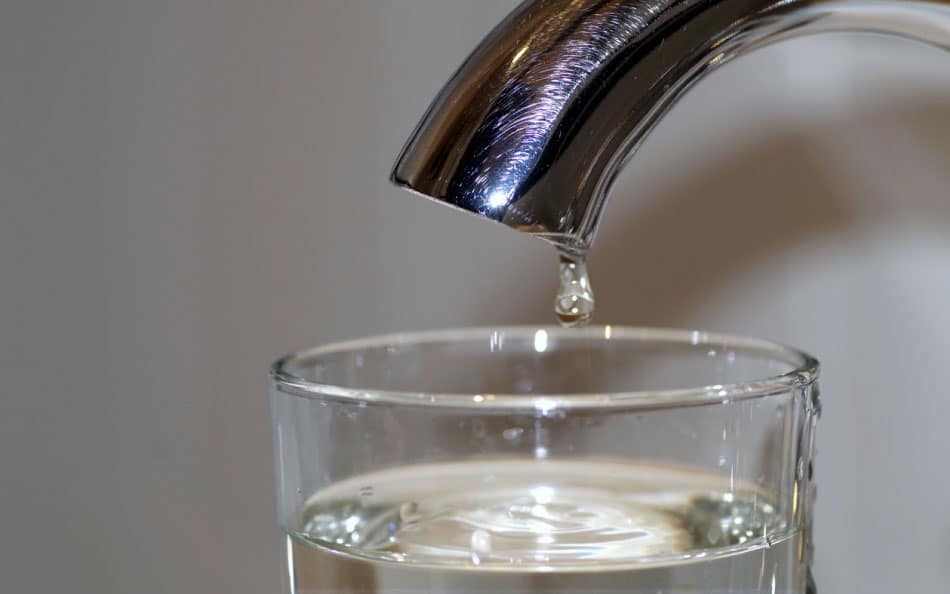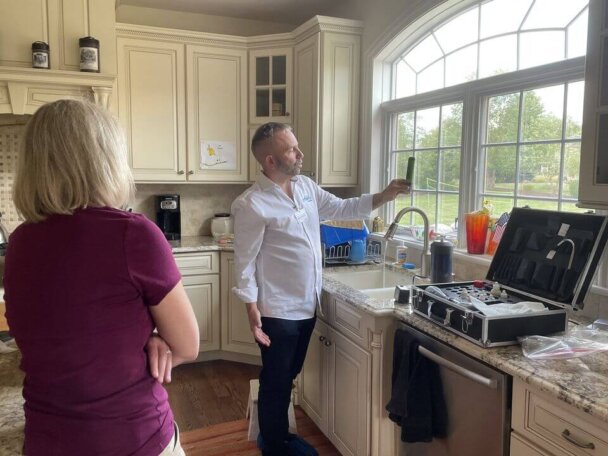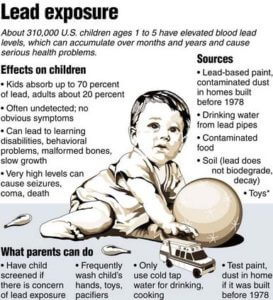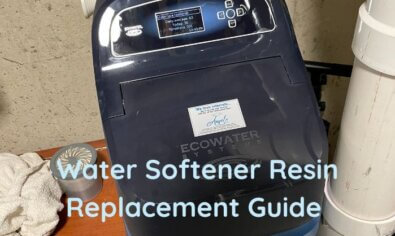Lead and Drinking Water in Private Wells

After an increase in cases of lead poisoning in children who live in Flint, Michigan, a state of emergency has been declared. Although these cases cause serious concern, there is a solution to prevent lead from creeping in to your water supply.
What is Lead?
According to the Centers for Disease Control (CDC), lead is bluish-gray metal found in small amounts on the earth’s outer layer. Lead can be found in all parts of our environment. Much of it comes from human activities including burning fossil fuels, mining, and manufacturing.
How does lead infiltrate your water supply?
The biggest culprit in contaminating the water supply is lead pipes. Other sources of contamination include lead solder used to join copper pipes, brass in faucets, coolers, and valves. Brass generally contains low lead levels, however the lead can still dissolve into the water.
How does Angel Water remove lead from the water supply?
There are numerous ways to remove lead from your water supply and there are many factors to consider when doing so. One of the first things to think about is if your water supply comes from city water or well water.
Concerned About Your Well Water? Get a Free Test Today!
Well water can carry contaminants like bacteria, chemicals, and heavy metals. Get a free water test now to ensure your water is clean and safe for your family.

Once that is assessed, Angel Water will decide if lead can be removed from your system by flushing it. If your water is severely contaminated, installing a reverse osmosis system can remove lead from your water supply.
Why should I be concerned?
An article from the Huffington Post emphasizes how the long-term consequences of lead poisoning can harm children on a physical and psychological level. Some of those problems include:
• Kidney dysfunction
• High blood pressure
• Behavioral disorders
Is there lead in my drinking water?
One of the most effective ways to find out if there is lead in your drinking water is to schedule a water test with Angel Water Inc. We can be contacted at 847-382-7800 or through our Facebook Page.
Our water tests are performed by trained professionals and will help you identify what’s in your water. Once we know what’s in your water, we can help remove any contaminants or impurities.
Need Well Water Solutions? Schedule an Appointment Now!
Protect your family from contaminants in your well water. Schedule an appointment today and get expert advice on the best filtration options for your home.




